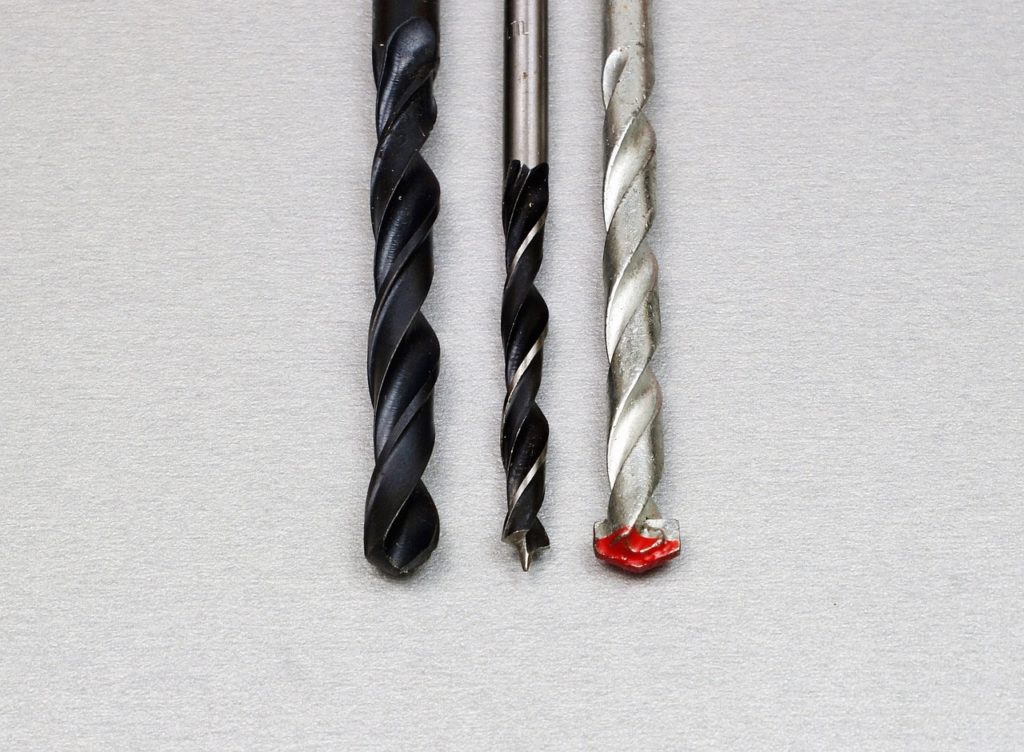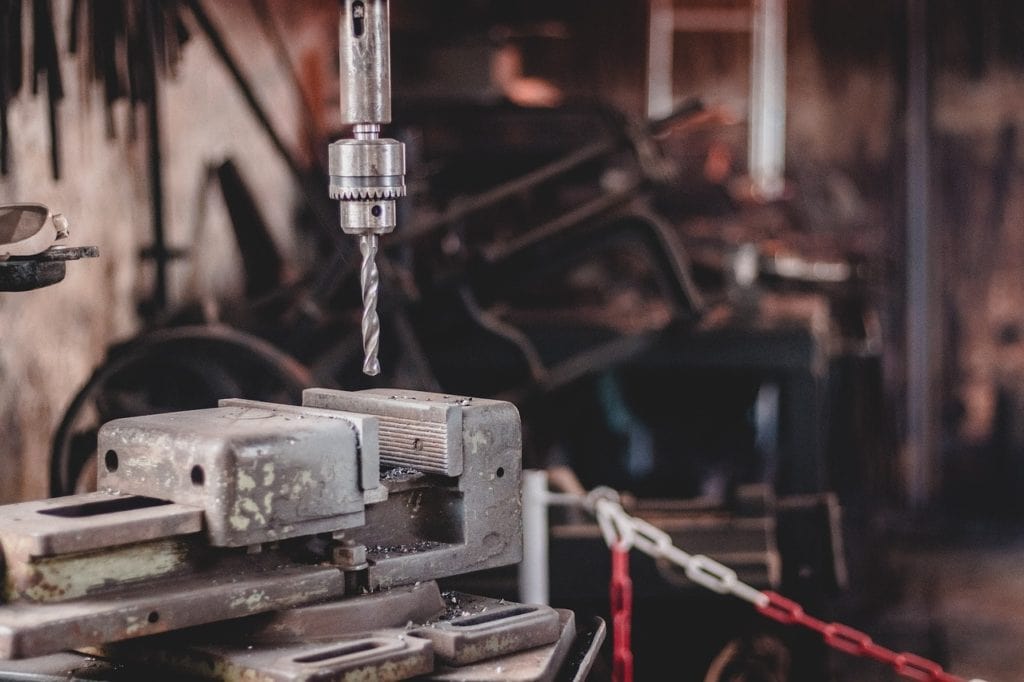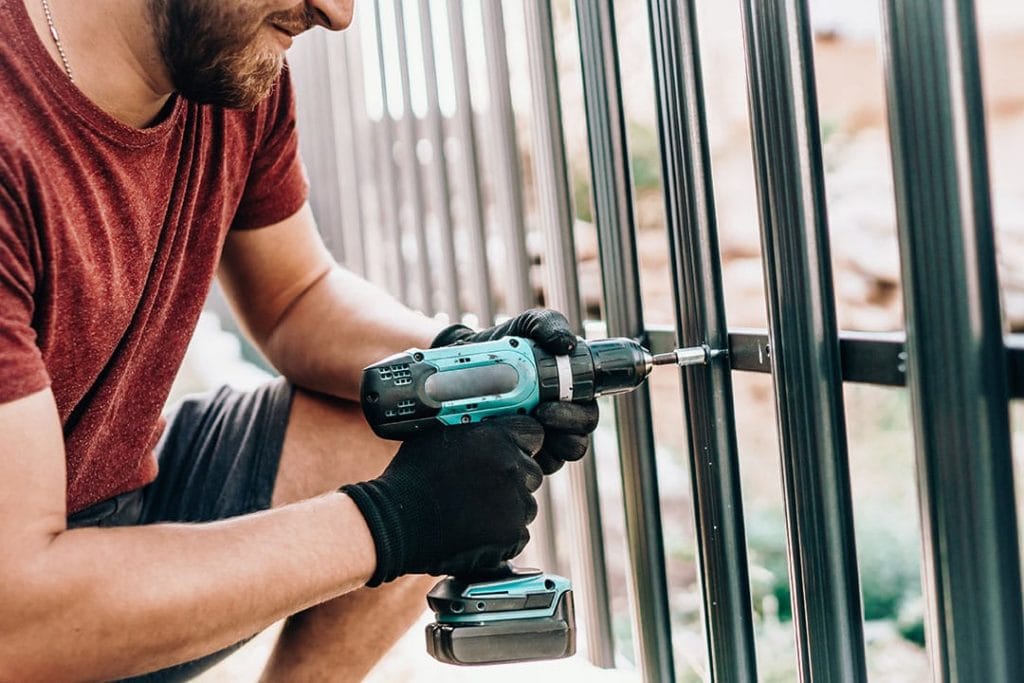How to Drill Through Metal (Step-by-Step DIY Guide)
-
- Last updated:


Drilling through metal can be a bit overwhelming, mostly if you’ve never done it before. However, if you know how to do it, it isn’t tough. It does require a bit more setup and know-how than drilling through wood, but it is doable.
In this article, we’ll look at everything you need to know about drilling through metal, including step-by-step instructions to make it as simple as possible.
1. Figure Out What Metal You’re Working With

In many cases, this should be easy to figure out. You should know based on the receipt or label. However, there are some cases where you’ll need to do a bit of research or testing to figure out the sort of metal you’re using. This is true for situations where you’re using scrap metal or otherwise don’t precisely know what metal you’re dealing with.
This is an important step, as you’ll need to use an appropriate drill bit and procedure for your piece of metal. Not all metal is cut the same or with the same equipment.
2. Get the Appropriate Drill Bit

Depending on the metal you’re using, you’ll need to select the appropriate drill bit. Individual drill bits are rated for different types of metal.
Regular drill bits are not made to cut through metal. They’ll wear themselves down and cut unevenly. Instead, look for a twisted drill bit with a flat center. Those with protruding centers are made to cut through wood and will create too much heat when they come into contact with metal. The pointed center is also easily damaged with hard materials like metal.
There are four main types of drill bits.
- High-speed steel bits are the cheapest option, but they do need to be replaced regularly.
- Titanium drill bits are the best and considered must-have for cutting through stainless steel and similar hard materials.
- Black oxide and cobalt steel bits are both available. However, they are only slightly better than HSS bits and cost much more. They aren’t worth the extra cost. Just get the titanium bits instead.
- There are also cone-shaped bits available, which are usually called step bits. These bits are used to drill holes of different sizes since the depth also controls the size of the hole. However, they are typically only used by professionals.
3. Get a Suitable Drill
Next, you’ll need a drill that is strong enough to bunch through the metal. Of course, the drill also needs to be useable with the drill bit you choose. Often, drills are made to work with specific bits. For this reason, you do need to ensure it can be used with a drill bit that is hard enough to get through the metal you’re using for your project.
You do not need a high-powered industrial drill or drill press to get through the metal. In fact, you can get through metal with most mid-tier consumer drills. There is little reason to buy something professional unless you’re doing it all the time.
Adjustable speed is the single important feature you really need. To get through metal, you need to put your drill at a fairly low speed. If it isn’t adjustable, this won’t be possible. The lower the drill can move at, the better.

4. Use a Metal Lubricant
You will also need to have a metal lubricant handy. This helps reduce friction while drilling, which reduces the heat created. The creation of heat is one of the main problems with drilling through metal, as it can throw sparks and potentially mess up the drill or bit. Different metal lubricants are needed for different metals. There is an extensive range out there for you to choose from.
5. Put on Appropriate Protection
While drilling through metal, it is essential to use the appropriate safety equipment. You need to wear eye protection to protect your eyes from possible shards. A mask is also recommended; you don’t want to breathe in any metal shards or anything of that sort.
If you’re working for an extended period, you should also plan on wearing eye protection. It can get quite loud while you’re drilling, so you should protect your ears.

6. Prepare the Metal
Before you begin drilling, you need to place a scrap piece of wood under and above the piece of metal you’re drilling. This will help you make a clean hole, as the wood will help hold your bit in place.
Next, you need to make a pilot hole. This will also help your drill bit go in the direction and spot you want it to. Otherwise, it is straightforward for bits to skip off the surface and go through the wrong place. Luckily, making a pilot hole is easy and only requires a nail and hammer. Make a small impression in the wood for the bit to “sit” into.

7. Get Drilling!
Now that you’ve prepared and gotten the correct equipment, you can finally start drilling. Go slow and do not apply too much force. Use plenty of lubrication. Your goal should be to avoid creating too much heat, which can cause all sorts of problems. Go slower than you think you need to.
If you notice smoke, stop. This is a sign that the drilling is creating too much heat. You should stop and let everything cool down before starting again. Add some more lubrication, and be sure you’re running at an extremely low speed.
If the hole is still a bit rough, you will need to clean the hole. You can do this by inserting the bit into the hole manually multiple times, which should help remove many extra metal shavings. Of course, be careful not to get cut by any sharp metal edges. Wear gloves that are made for this sort of work!
- Related Read: How to Drill a Hole in Glass: Step-by-Step DIY Guide

Frequently Asked Questions (FAQs)
Do you need a special drill bit for metal?
Yes. Regular drill bits are not made to cut through steel or any other metal. If you attempt to use them, they will wear down, wrap, and break. Instead, you need a heavy-duty drill bit that is designed for drilling through metal. Titanium drill bits are the best option for drilling through most metals, but there are other options as well.
What is the easiest way to drill through metal?
If you want to drill through metal as quickly as possible, it is essential to have all the necessary tools. If you have the recommended drill bits and a decently powerful drill, drilling through metal shouldn’t be too difficult. We highly recommend drilling very slowly through metal to prevent heat from building up. Read through our step-by-step instructions to ensure you’re drilling through metal with all the right equipment and procedures.

What kind of drill bit is best for metal?
There are a few different types of drill bits that are suitable for metal. Technically, any of these would work for most jobs. Cobalt is a decent option for drilling through more hardened steels, as well as stainless steel. However, titanium isn’t much more expensive and is longer-lasting, which is why we recommend it. If you’re going to work with metal for quite a while, then you’re better off choosing a titanium drill bit.
How can you tell if a drill bit is for metal?
Only individual drill bits are suitable for metal. Those drill bits that are tapered to a 118- or 135-degree angle are typically made for metals. However, it can be difficult to tell just what angle it is tapered at by merely looking at it. For this reason, it is usually best to choose a drill bit that is specifically marketed for drilling through metal.
Featured Image Credit: SergeyMarina, Shutterstock
Contents

